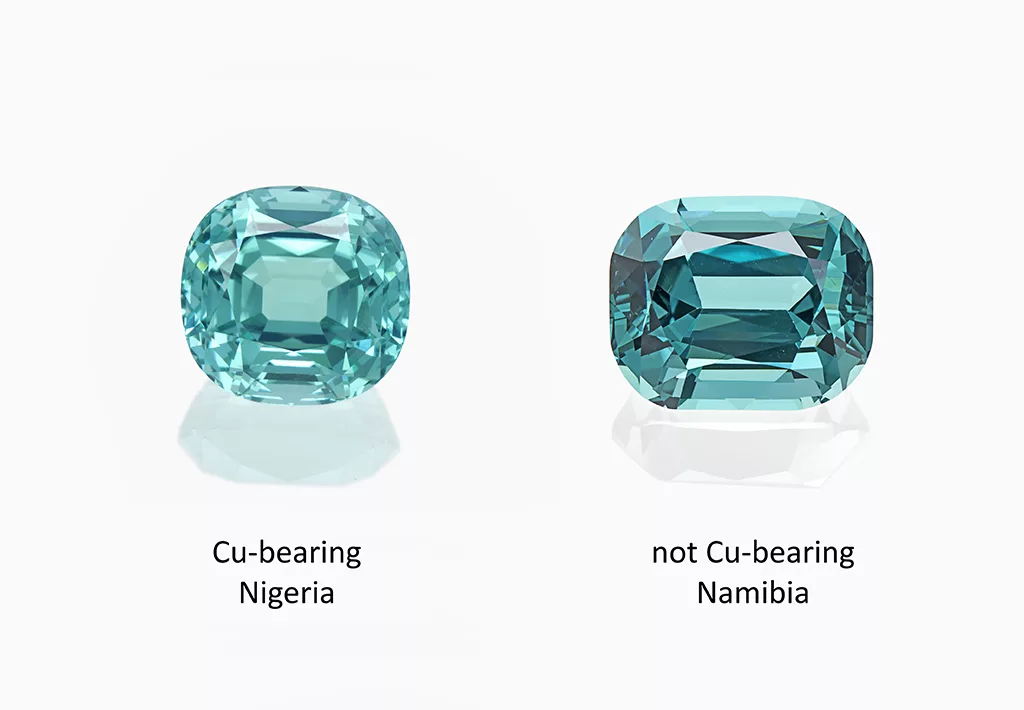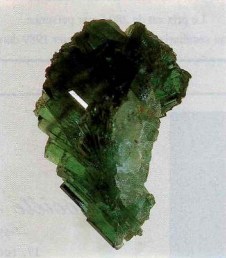
New copper-bearing tourmalines from Nigeria
by Dr. M.S. Krzemnicki, first published in Facette 27 (June 2021)

Copper-bearing tourmaline from Nigeria is known in the trade since about two decades (Milisenda 2001, Henricus, 2001; Smith et al., 2001; Zang et al., 2001). The first reported material from Nigeria was rather of aquamarine- to amethyst-like colours, but shortly after it was followed by a limited and sporadic production of more saturated to ‘electric’ blue and vivid green material (Furuya, 2004). In gemmological literature these copper-bearing tourmalines are also described as type I and type II Nigerian material (Abduriyim et al. 2006).
Recently, we received a very interesting copper-bearing tourmaline of exceptional size (60 ct) and purity which was characterised by a beautiful slightly greenish blue colour, very similar to the colour of copper-free tourmalines from Namibia and other sources, known in the trade also as ‘lagoon’ tourmalines (Figure 1).
Based on chemical analyses (GemTOF) and statistical data analyses, the Nigerian origin of this new copper-bearing tourmaline could be well established. Interestingly, however, this new material contained not only copper and manganese, but also quite a distinct amount of iron. This results in a weak Fe2+ absorption band at about 700nm superposed on the copper bands in the absorption spectrum. This contribution influences the colour of the stone and explains its colour similarity with copper-free ‘lagoon’ tourmalines which owe their colour mainly to the Fe2+ absorption band (Merkel & Breeding, 2009).
For the time being, and based on the relatively distinct concentration of copper in the described tourmaline from Nigeria, we consider that this specific stone may be called Paraiba tourmaline in the trade. A more detailed study of this new and attractive material from Nigeria is currently under way. Our findings and nomenclature considerations will be published soon in a short article in an upcoming issue of the Journal of Gemmology.


